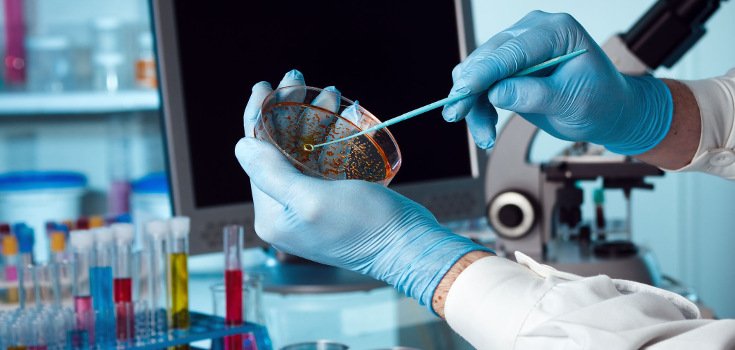Scientists Try to Unlock the Secrets of the Human Microbiome

Many scientists and anthropologists (though not all) believe that long before humans came on the evolutionary scene, microbes ruled the earth. When humans finally showed up they had to get with the program, which was symbiosis. The deal was struck that some microbes could use us as walking condominiums in which they could live safe and sound, and in turn they would protect us against other invading microbes and perform a variety of other tasks that scientists are busy discovering.
There are trillions of microbes of many kinds inhabiting the human body, including bacteria, viruses, and fungi. Each has a unique set of genes, a finding which is interesting researchers who want to know what these genes mean for human health. Although this vein of science is still emerging, it has named the sum total of these microbes as the human microbiome. It’s a term that may make headlines in the future.
Microbes live in and on everyone, and they play vital roles in many life processes. For example, it is estimated that 500 to 1,000 species of bacteria live in the human gut at any one time.
Amazingly, this mass of microorganisms accounts for up to 3% of a person’s total weight. In this instance of symbiosis we give the bacteria food, shelter, and some sugar to munch on.
In return they act as our bodyguards, defending us from non-friendly bacteria and other pathogens, keeping the immune system strong, and getting rid of aberrant cells that might become cancerous.
How the Human Microbiome Loses Balance
But many things can go wrong with this cozy relationship. Antibiotics use is probably the greatest threat – so much so that the CDC has even issued seriously concerning reports on how antibiotic resistance could be the death of us. Antibiotics do a fair job of killing invading microbes, but they also kill off the friendly bacteria living in the gut. When that happens, we are left without our bodyguards and open to invasion as well as a host of digestive problems.
Eating foods containing pesticides or herbicides and drinking chlorinated water do a good job of killing off friendly microbes too, as does eating lab created ‘foods’ which microbes can’t understand.
Recently, gut bacteria and certain bacterial genes known as estrobolomes have been found to metabolize estrogen and other hormones, making sure they exit the body at the proper time and don’t get recycled. This process is critical to women and even men because they begin to produce and recycle excessive estrogen as they age.
The Human Microbiome Goes Beyond the Intestinal Tract
Although many people are aware of symbiotic bacteria in the gut, microbes exist all over the body. They can be found in all the orifices, including mouth, nasal passages, lungs, anus, and the urogenital tract. Scientists suspect the microbiome was systematically created rather than being a random happening, making caring for its manifestation in each of us a top priority.
Although this young science has not yet linked specific combinations of microbes to specific disease states, one would think it is just a matter of time until they do. Diabetes, cancer, heart disease, and asthma all appear to be under the influence of the microbiome, as well as other factors yet to be explored in depth such as the influence of sleep and the Circadian rhythm.
It is not just humans who live in symbiosis with microbes. This relationship exists across nature, encompassing plants, animals, soil, water, and more. Since the first single celled organism was formed, symbiosis has been integral in enhancing life. Since the apparent rule has always been that which enhances the probability of life will prevail, the current interest in the microbiome is no surprise.
